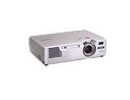'ZDNET Recommends': What exactly does it mean?
ZDNET's recommendations are based on many hours of testing, research, and comparison shopping. We gather data from the best available sources, including vendor and retailer listings as well as other relevant and independent reviews sites. And we pore over customer reviews to find out what matters to real people who already own and use the products and services we’re assessing.
When you click through from our site to a retailer and buy a product or service, we may earn affiliate commissions. This helps support our work, but does not affect what we cover or how, and it does not affect the price you pay. Neither ZDNET nor the author are compensated for these independent reviews. Indeed, we follow strict guidelines that ensure our editorial content is never influenced by advertisers.
ZDNET's editorial team writes on behalf of you, our reader. Our goal is to deliver the most accurate information and the most knowledgeable advice possible in order to help you make smarter buying decisions on tech gear and a wide array of products and services. Our editors thoroughly review and fact-check every article to ensure that our content meets the highest standards. If we have made an error or published misleading information, we will correct or clarify the article. If you see inaccuracies in our content, please report the mistake via this form.
Epson EMP-735


Epson EMP-735
pros and cons
- Wireless network connection
- Portable
- Bright
- Low contrast ratio
- Wireless connection not suitable for full-motion video
Epson thinks it has the solution to awkward video cables and having to swap them in multi-person presentations –- simply use wireless instead. The EMP-735 is an otherwise unremarkable projector that features an 802.11b wireless network card allowing you to connect your notebook to it without having to use a VGA cable. While this doesn't support full-motion video, it's fast enough for most slide presentations.
Networking aside, the EMP-735 is a 2000 ANSI Lumens TFT LCD projector with a native resolution of 1024 x 768 (XGA). Its contrast ratio of 400:1 is quite low for a new projector these days, but in a small projector some compromise has to be made between brightness and contrast. Since the EMP-735 isn't likely to be used for home cinema, opting for a brighter image is probably the better choice, since this will work better in lit meeting rooms.
As this is an LCD projector, there's a "screen door" effect to the image, although it's only very obvious at larger image sizes. The EMP-735 includes an auto-keystone capability, where the projector detects the angle of tilt and sets the keystone correction accordingly. This is done using a sensor, rather than relying on the height of the two tilt legs, which gives a more accurate image when the projector's not on a level surface.
Physically the projector is small and light, although it's not quite as compact as some ultraportable projectors we've seen. At 27.6 x 19.0 x 7.9cm and 1.9kg you'll be able to take it on your travels easily, and the supplied carry case even has a pocket for the PC card wireless adapter to stop it rattling around while you're on the move.
The EMP-735's wired inputs are VGA, S-Video and composite video. There's an audio input for the 1W mono speaker built into the projector, if you really need it. There's also a USB connection which allows you to use the remote control as a pointing device for your notebook, although this makes using the wireless video somewhat pointless. The lack of a digital video input is getting more unusual, but since the wireless connection is digital, you can forgive this.
The remote control is possibly the smallest we've seen for a projector, being just 8.6 x 4.0 x 0.6cm and weighing 18g. You can access the projector's menu from the control, and also use it as a pointing device using the supplied USB cable for the EMP-735.
The EMP-735's wireless network connection is provided through a standard-looking PC card adapter which slots into the front of the projector. This protrusion isn't ideal and you'll have to take the card out when packing the projector up. However, this arrangement means you can use the PC card slot for memory cards containing presentations, obviating the need for a notebook PC.
Top ZDNET Reviews
The connection can use either ad-hoc or infrastructure mode networking - you'll probably use the former when visiting another office, and the latter in your own. Either way, you'll need the EMP NS Connection software installed on your PC to use the projector. This software takes what's displayed on your PC's screen and sends it to the projector. The maximum resolution that the system can cope with is 1280 x 1024, and you're advised to keep colour depth to 24 bit or lower. You're presented with a list of networked projectors available.
In addition to sending the image to the projector, NS Connection allows a certain degree of control over the projector's functions such as image controls. Furthermore, the EMP-735 has an embedded web server, so that it can be controlled from any PC on the same network. The web interface is the easiest way of making many changes to the configuration, particularly the network interface. However, you'll probably have to use the NS Connection software to locate the projector initially, especially if you're using DHCP.
In use the wireless link is fine for presentations, and other largely static images. There's a slight lag between the PC's own screen and the image from the projector - we found this to be about half a second on our test configuration when nothing else was going on. If you launch other programs the lag gets significantly worse - up to a few seconds on a busy PC. Full-motion video is impossible over the wireless link - we tried watching a DVD movie but got at best a couple of frames a second.
Other software included with the EMP-735 includes EMP Monitor, a simple management utility that allows you to turn the projector on and off, and select the input source across the network. This kind of program is most useful where the projector has been installed out of immediate reach, and is unlikely to be used much by someone carrying it with them. It's also made largely obsolete by the projector's built-in web interface.
The other piece of software is EMP Slidemaker2, a utility that compresses slide shows for storage on a memory card. In conjunction with the projector's remote control, this allows you to give presentations without needing a PC at all, although this is limited to static slides, although you can add transition effects, but these are done by the projector, and you can't animate individual slides. You can also add a background music file to the presentation, should you wish. Slidemaker2 can import from PowerPoint files, JPEG images, BMP images and WAV sound files.
It would be possible to integrate the wireless adapter card into the projector itself, or at least enclose the card inside the case. However, this would stop you using the PC card slot for a memory card containing presentations.
The EMP-735 isn't the very lightest and smallest projector available, and neither is it cheap. The inclusion of the wireless network interface is more than a gimmick, instead showing one possible way of connecting to projectors in future. Faster networking would improve this facility, but for now at least this is an interesting development.